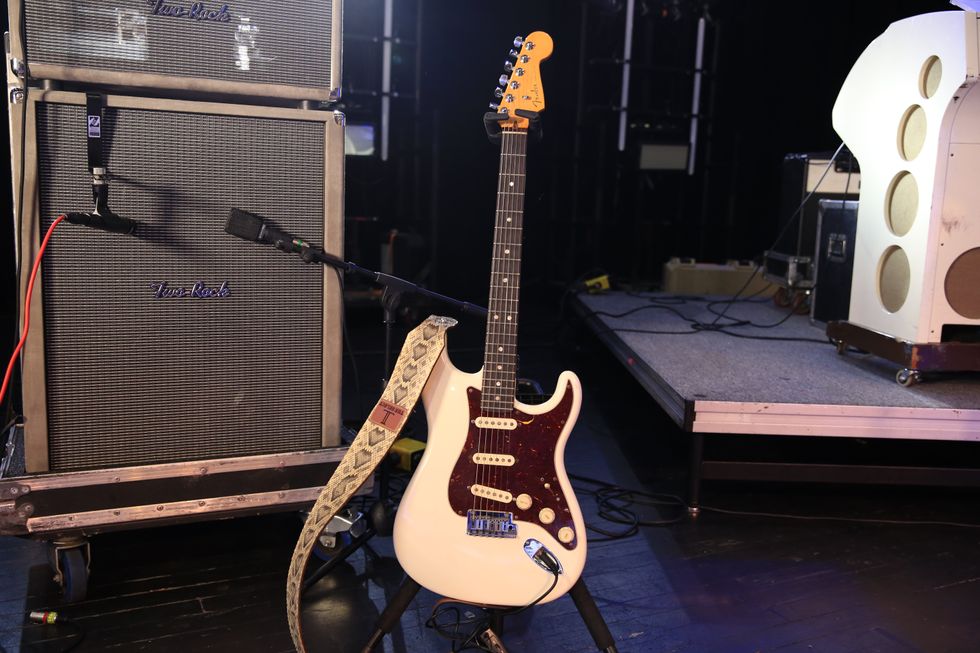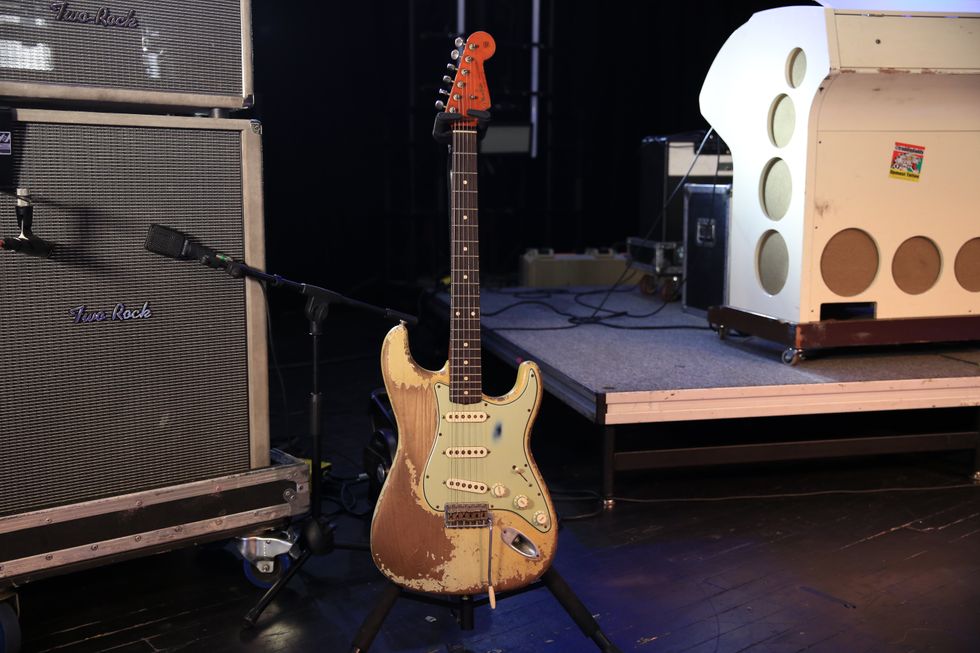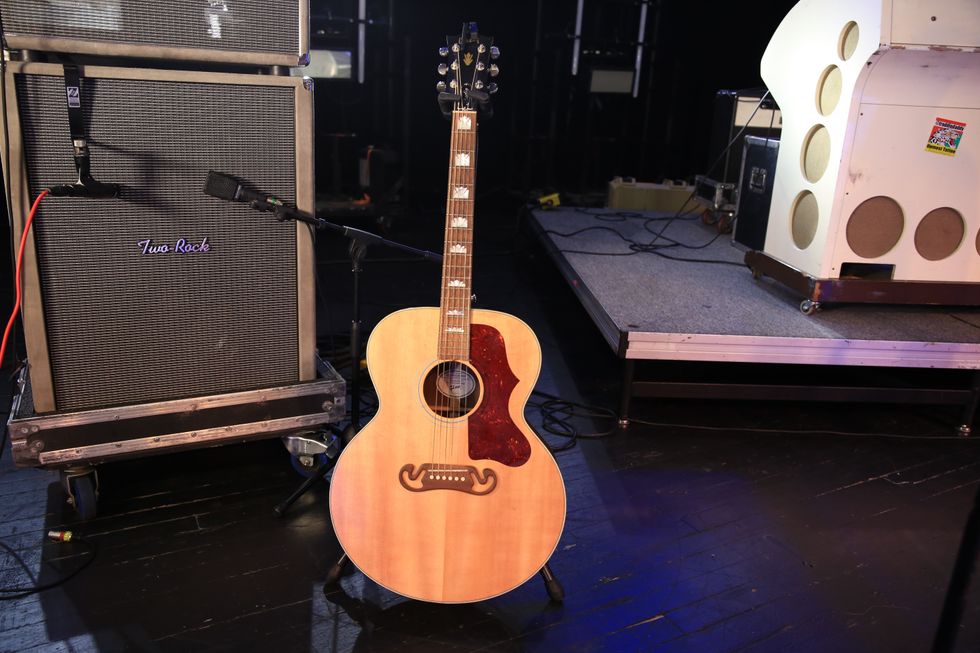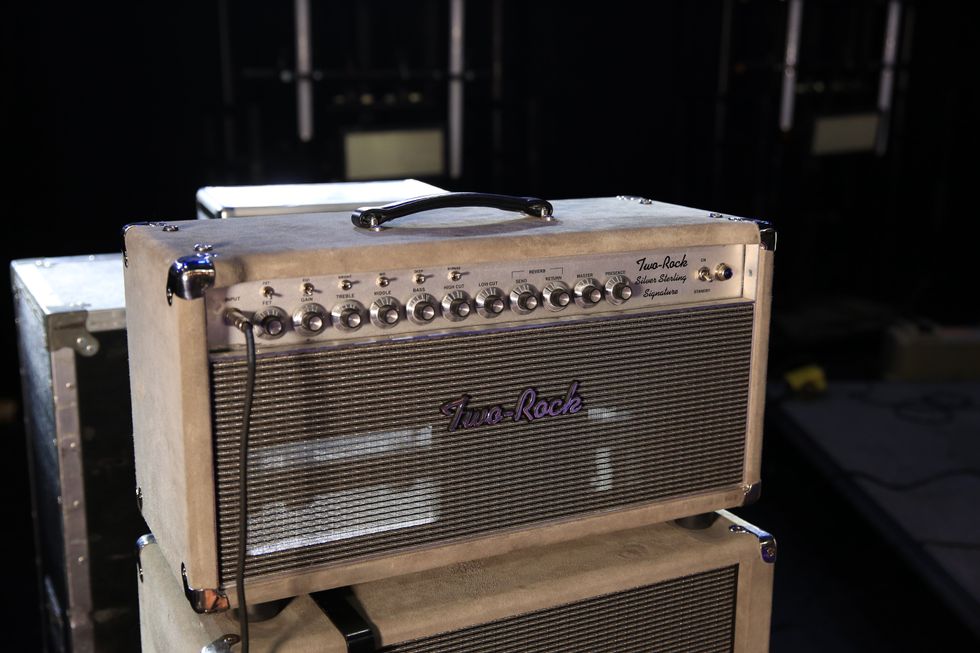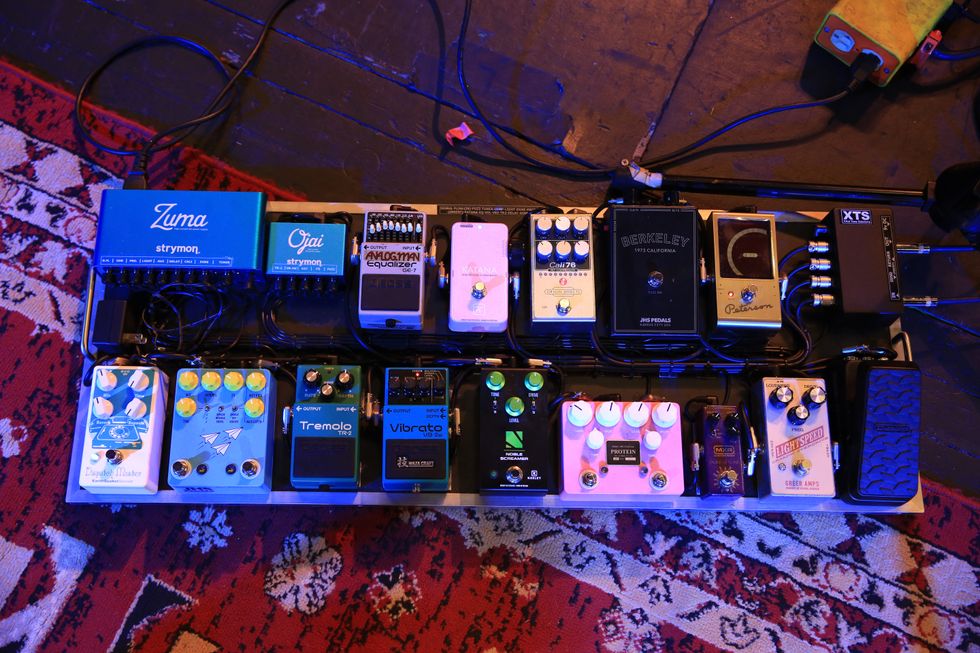Hear how lone tone trooper Eric Hudson morphs through many moods with four delays, three drives, two amps, and one splintered Strat.
Over the past decade and through four albums, Foxing has shown a lot of musical personalities. They’ve embraced the quirky, eclectic folk of Neutral Milk Hotel. Guitarist Eric Hudson has shown off some deft fretwork wrapped around complex rhythms similar to Tiny Moving Parts’ Dylan Mattheisen. They’ve dabbled in complicated, ambiguous instrumentation that echoes Radiohead. Most recently, the band has flexed a cinematic, post-rock cohesion that connects plot points via varied emotions and energy rather than analogous storytelling. And during the Rundown, Hudson hints at heavier, darker moments to come as they’ve been writing in tunings reserved for Behemoth and Melvins. All of these experimentations and transformations have allowed Foxing to carry on without needing a roadmap to their rock. And we’re just along for the ride.
The St. Louis indie rockers formed in the early 2010s out of the demise of Hunter Gatherer. Originally, the band was a trio with singer/guitarist Conor Murphy, bassist Josh Coll, and drummer Jon Hellwig. Prior to recording their 2013 debut, The Albatross, they expanded to a quintet with the addition of guitarists Eric Hudson and Ricky Sampson. However, Coll left ahead of Foxing’s third album, Nearer My God, and prior to recording their 2021 release, Draw Down the Moon (co-produced by Rig Rundown alumnus Andy Hull of Manchester Orchestra). And then Sampson departed the band. Murphy, Hellwig, and Hudson are the core members and tour with a rotating cast of contributors.
Ahead of Foxing’s July 5 headlining show at Nashville’s Basement East, Chris Kies hopped onstage and talked gear with Hudson, who touched on his love of “clanky” Strats, illustrated how his dual pedalboards can project him from pastoral to delirium, and explained why it always pays off to have good friends and to hang out at the merch booth.
Brought to you by D’Addario XPND Pedalboard.
The “Clanky-Caster”
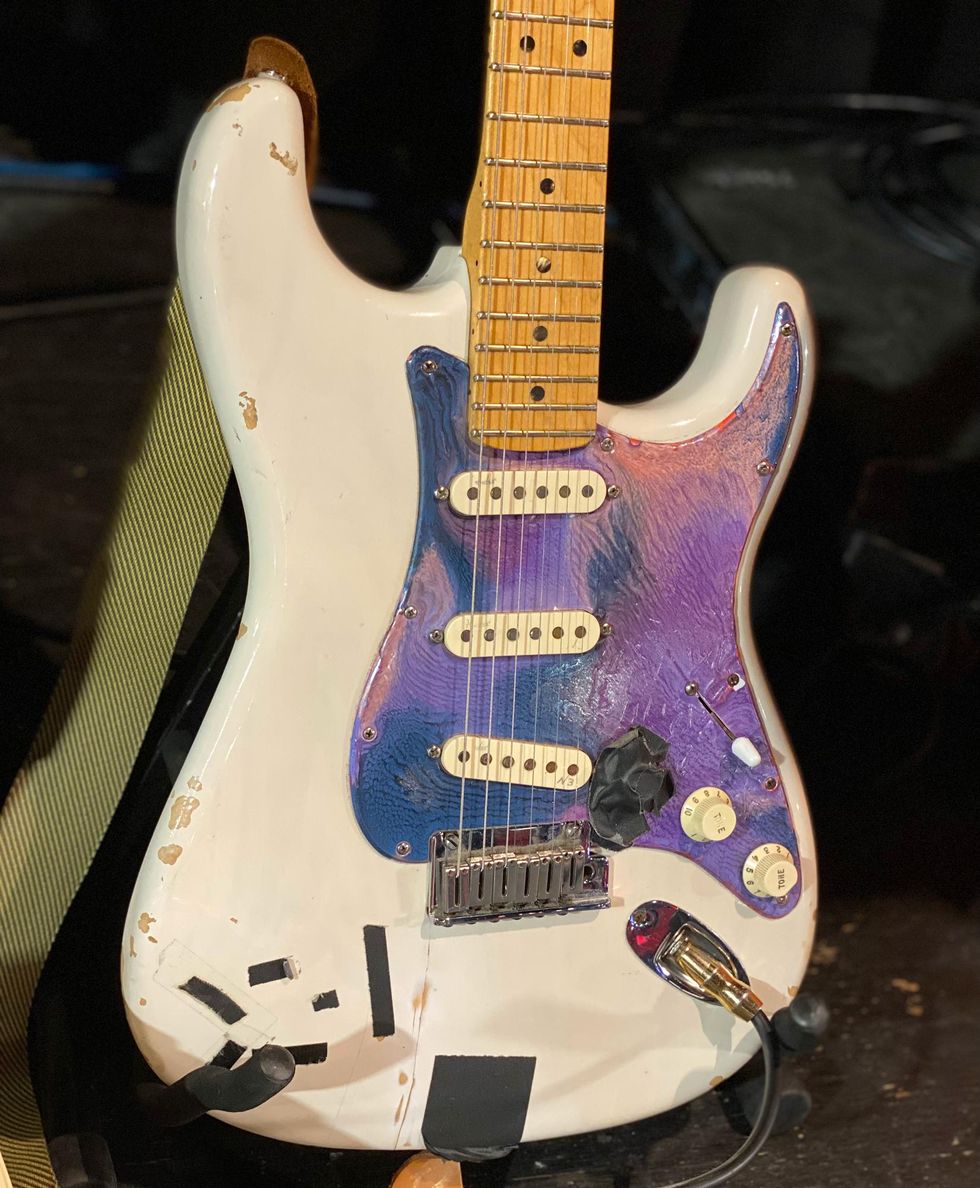
“I love Strats because of the clankiness of their attack, and I think that’s why I’ve always played them my whole life,” concedes Foxing guitarist Eric Hudson. His longtime companion is a 2014 Fender American Professional Stratocaster. It’s gotten a facelift with a custom pickguard (painted by a friend) and upgraded with Fender’s Gen 3 Noiseless Stratocaster single-coils. During one show, he thought he was losing signal from the amp, but realized his pinky was anchored around the master volume and he was slowly turning himself down. He’s since secured the volume on 10 with gaff tape. All his guitars take D’Addario NYXLs (.010 –.046). The band explores several tunings including standard, open E (with a capo in various positions), and DADGAD, and Hudson alludes to the forthcoming material featuring some lower and dropped tunings.
Temper, Temper
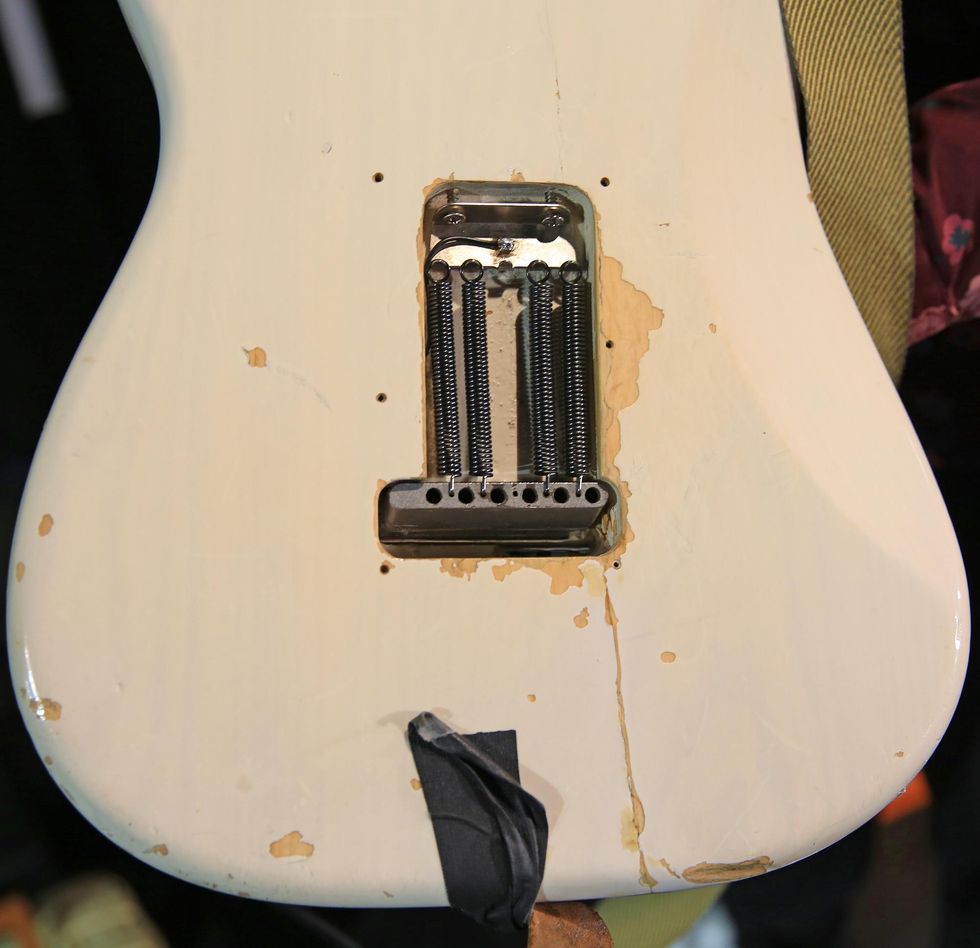
Frustration boiled over during one gig and Hudson let his Strat hit the deck. It split the instrument in half, but luckily Tritone Guitars’ repair ace Dave Anderson gave it the requisite TLC to reclaim No. 1 status.
Durability Is the Best Ability
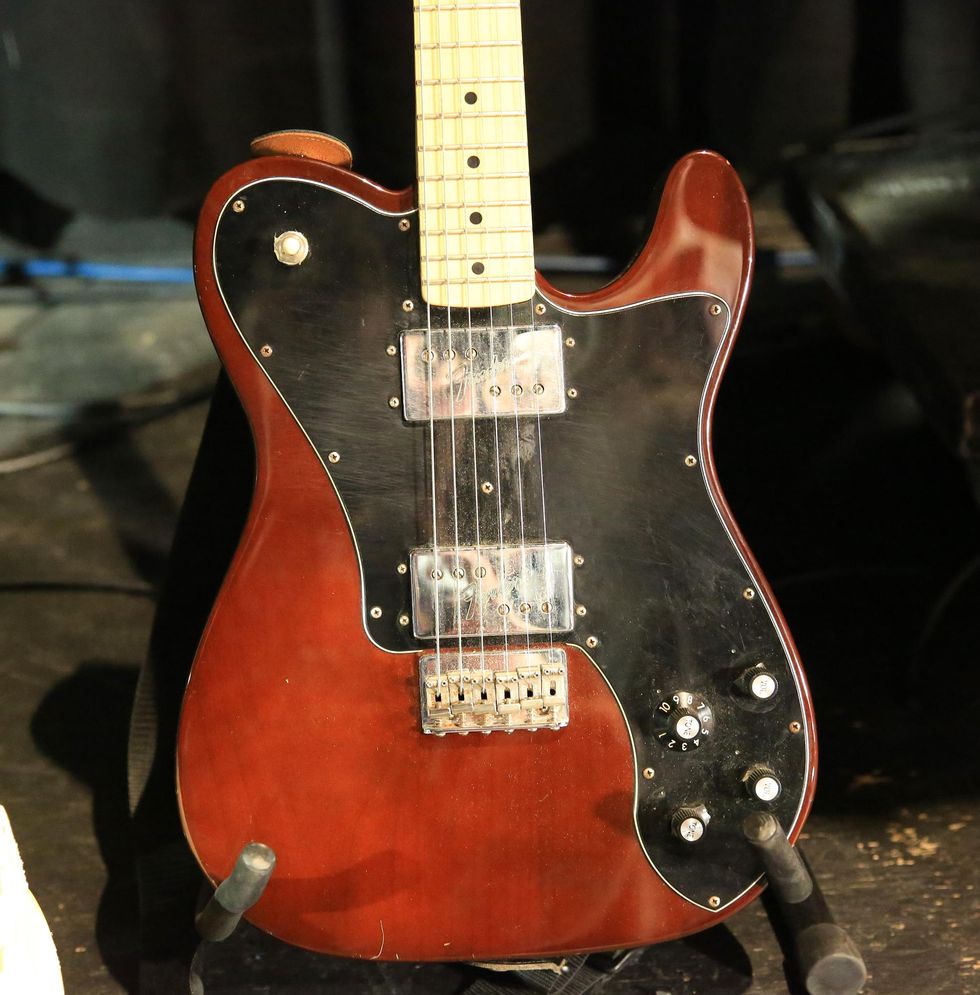
“I don’t have any techs, so I love gear that doesn’t break and this one has never let me down,” states Hudson. After the band’s gear was stolen in 2015, Hudson treated himself (out of necessity) to this Fender ’72 Telecaster Deluxe reissue—a model he always wanted. This one sees the spotlight for any open-E songs (both minor and major) and “Medic,” which requires tapping with a capo on the 5th fret.
By the Light of the Moon
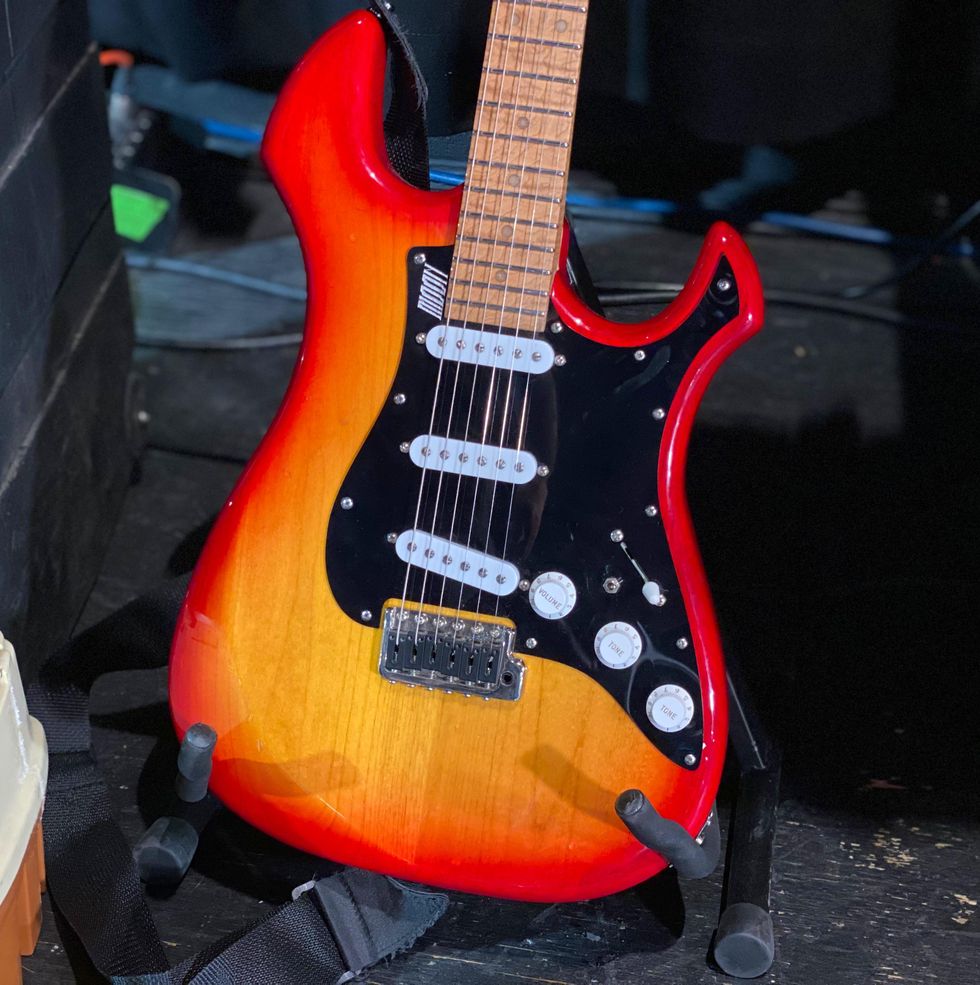
Moon Guitars’ founder Kyle Wolfe and one of Hudson’s close friends worked together to create this instrument for the Foxing fretmaster. It’s based on the company’s Blood Moon S-style platform. The cherry sunburst and black pickguard approximates the look of the Strat Hudson had stolen when the band’s trailer was raided seven years ago. He uses this one on songs with big, heavy chords and that require an extra bit of spice.
Beak-areful
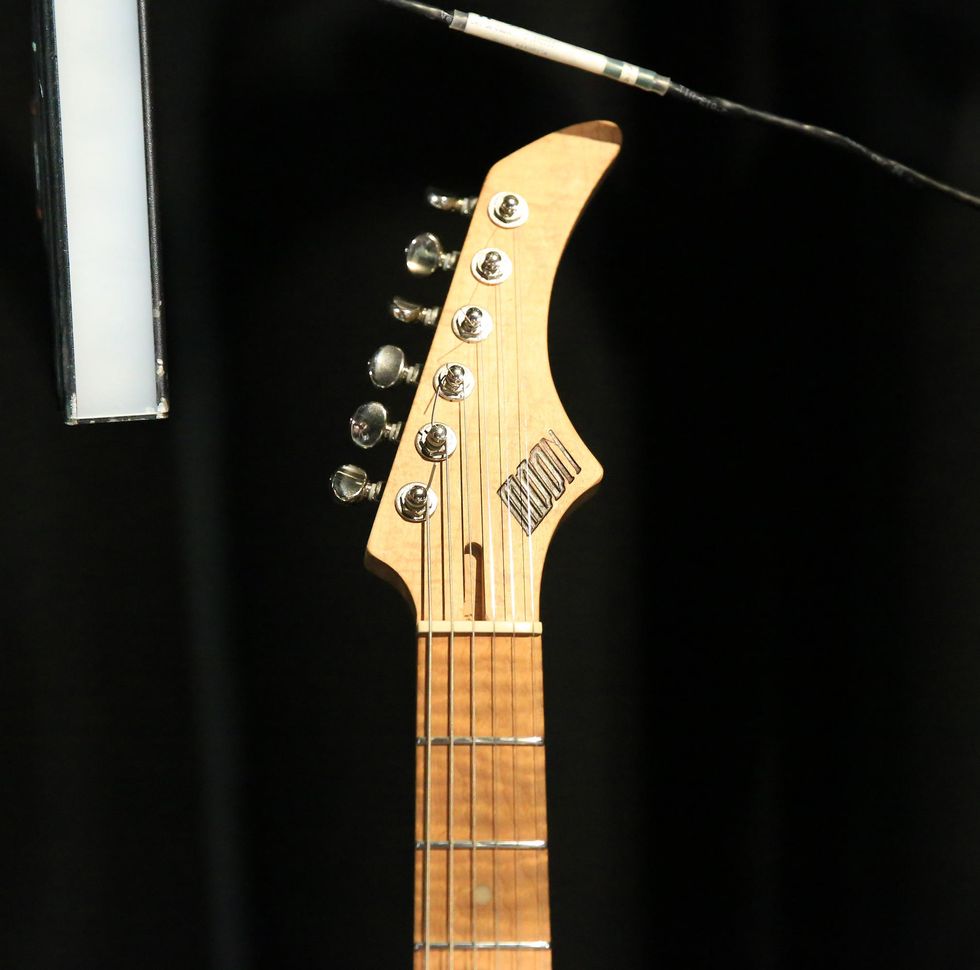
The Blood Moon model’s headstock has a very raptor-like silhouette, perfect for deterring any stage divers.
Baffling Bassman
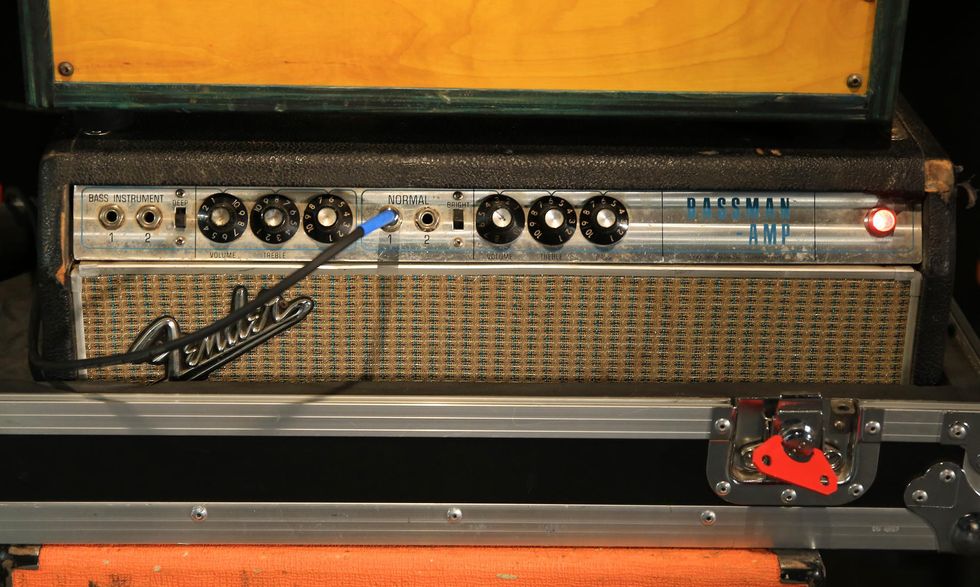
Hudson’s main amp for years has been this 1968 Fender Bassman that he picked up the same day he bought the ’72 Deluxe reissue for $700. And like the Tele, it’s a staunch sidekick that’s never let him down.
He hints during the Rundown that his silver-panel beast may have the guts of a black-panel Bassman, because it’s from the transition-era of Fender amps, where early silver-panel amps left Fullerton only cosmetically different from their predecessors. He indicates that he was told this could be true because of the black lines enclosing the name Bassman on the amp’s face.
Casting Tones
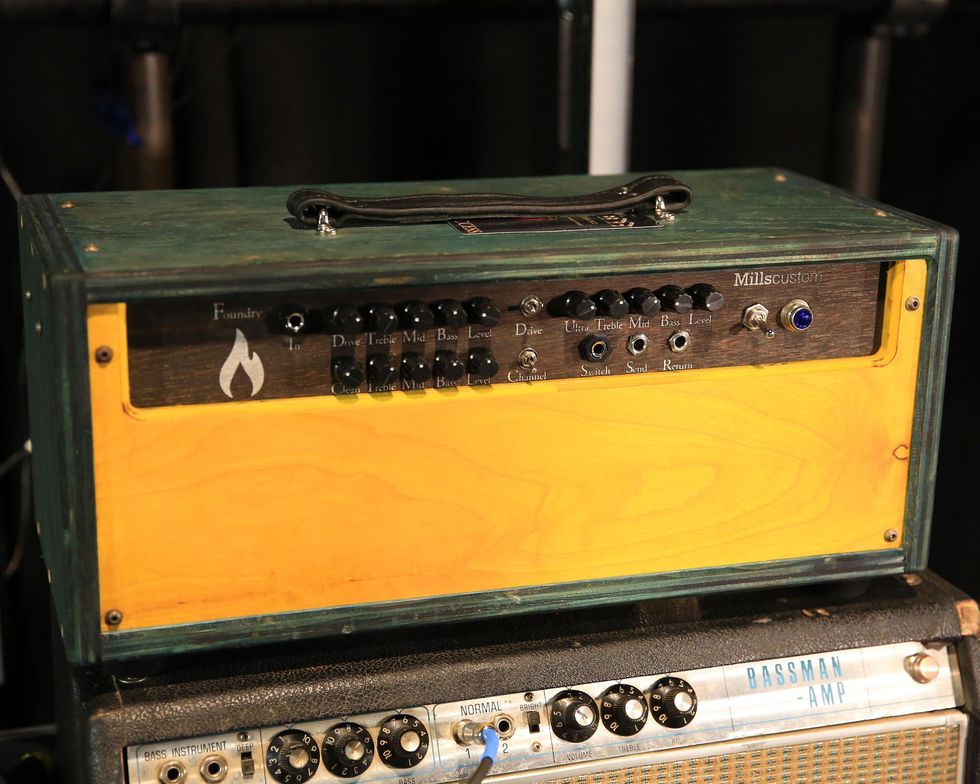
Here we have Hudson’s Mills Custom Foundry. He brought the 3-channel head out on the road to test it against the Bassman. He’s been toggling between the Fender and Mills every few nights to see how the Foundry meshes with his Bassman-tailored tone platform. The three channels cover everything from tame, glassy cleans to raucous ’90s alternative rock to gobs of gain for modern metal.
Stack It Up!
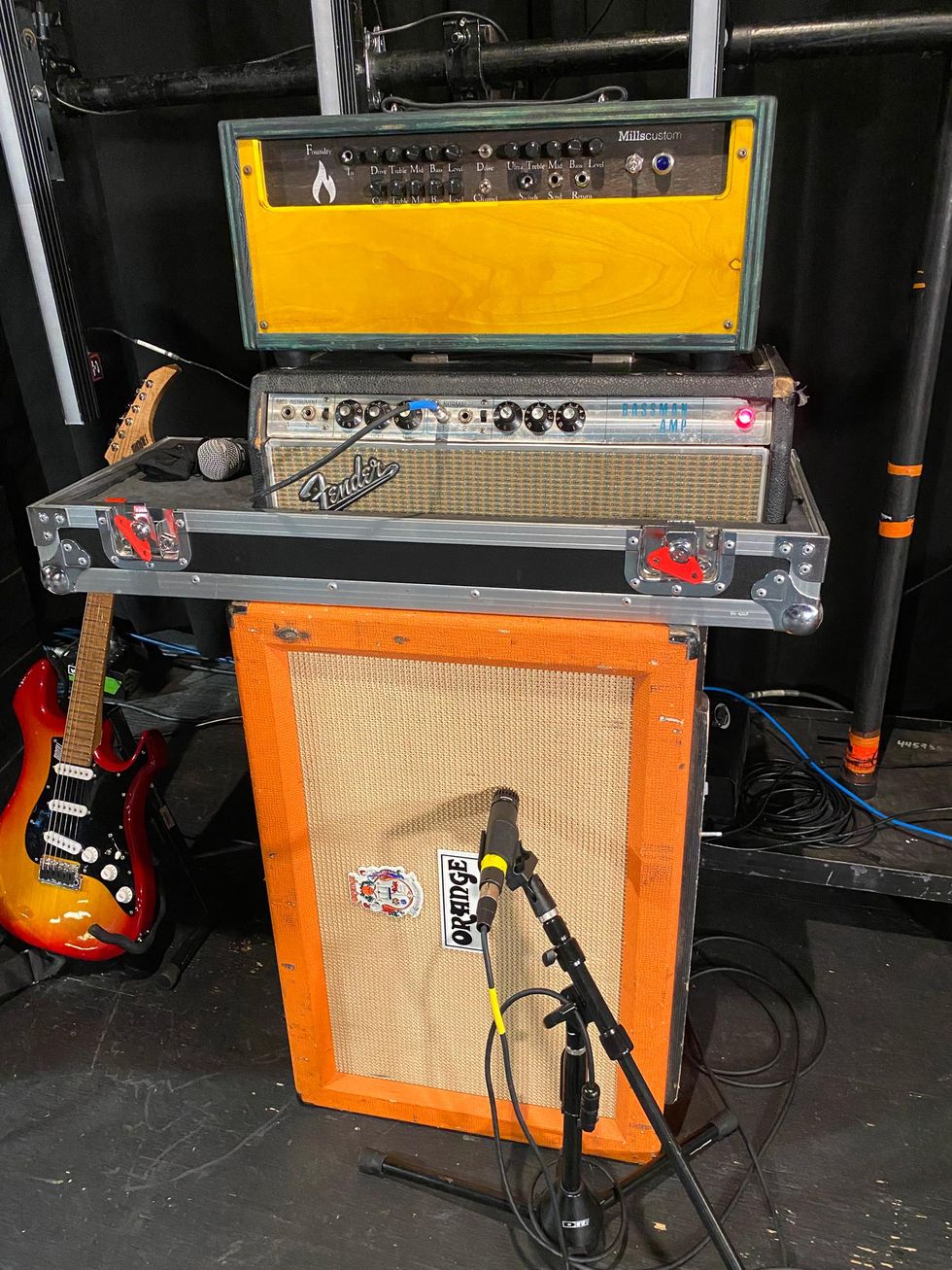
You can see that both heads run through an Orange PPC212 cabinet that is loaded with Celestion Vintage 30s.
Mutation Station
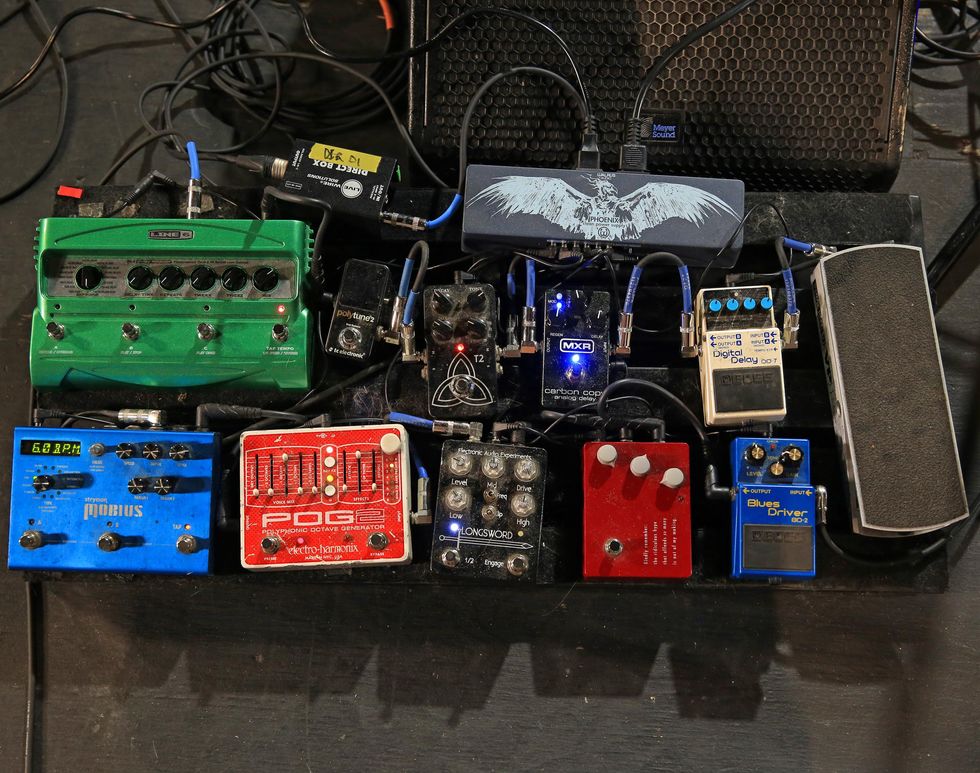
Hudson’s main pedalboard can be broken down into a few key food groups: time-based (Boss DD-7 Digital Delay, MXR Carbon Copy, TC Electronic Trinity, and Line 6 DL4), drive (Boss BD-2 Blues Driver, Klon KTR, and Electronic Audio Experiments Longsword), and weirdos (Strymon Mobius and Electro-Harmonix POG). (It’s worth noting the KTR was given to him after a show by a Klon employee who loves Foxing.) Since he’s taped his Strat’s volume knob, he has an Ernie Ball 6180 VP JR for controlling dynamics, a Walrus Audio Phoenix powers the pedals, and a TC Electronic PolyTune 2 Noir Mini keeps his guitars in check.
More Madness
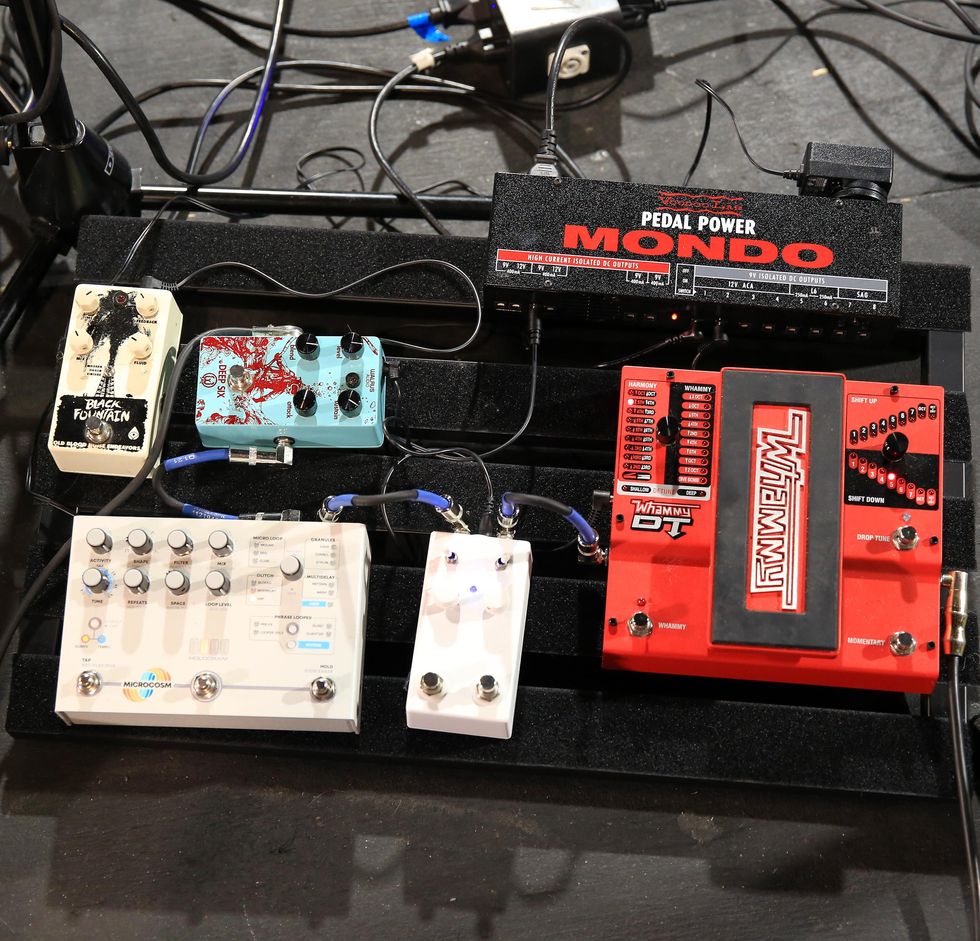
Hudson’s secondary board is the land of experimentation. Here, he’ll audition pedals before making any substitutions or additions to mission control. Currently, he has a DigiTech Whammy DT in a trial phase to see if the drop-tuning function will allow him to employ lower tunings for new songs on his beloved, fissured Strat. So far, he’s enjoyed the user experience and feels any perceived slight glitches or tracking latency gives his sound additional character. The nondescript white box is a King of Gear Feral Glitch that was made to replicate Jonny Greenwood’s solo at the end of “There there.” (“The Boney King of Nowhere”) from Radiohead’s Hail to the Thief. Next, he has a Hologram Electronics Microcosm that digests your signal and colorfully regurgitates it using a variety of granular sampling, delay, and looping techniques. Up top are two more standard-fare effects: a Walrus Audio Deep Six V1 compressor and an Old Blood Noise Endeavors Black Fountain delay. This stomp station is energized by a Voodoo Lab Pedal Power MONDO.




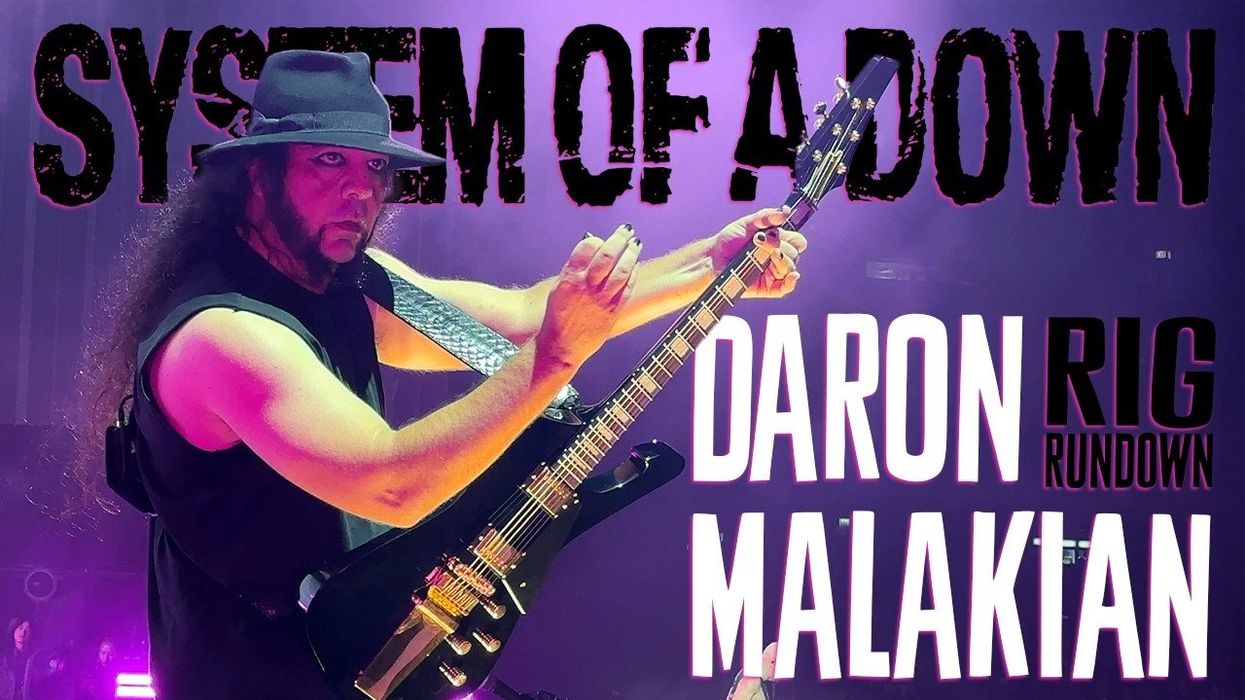


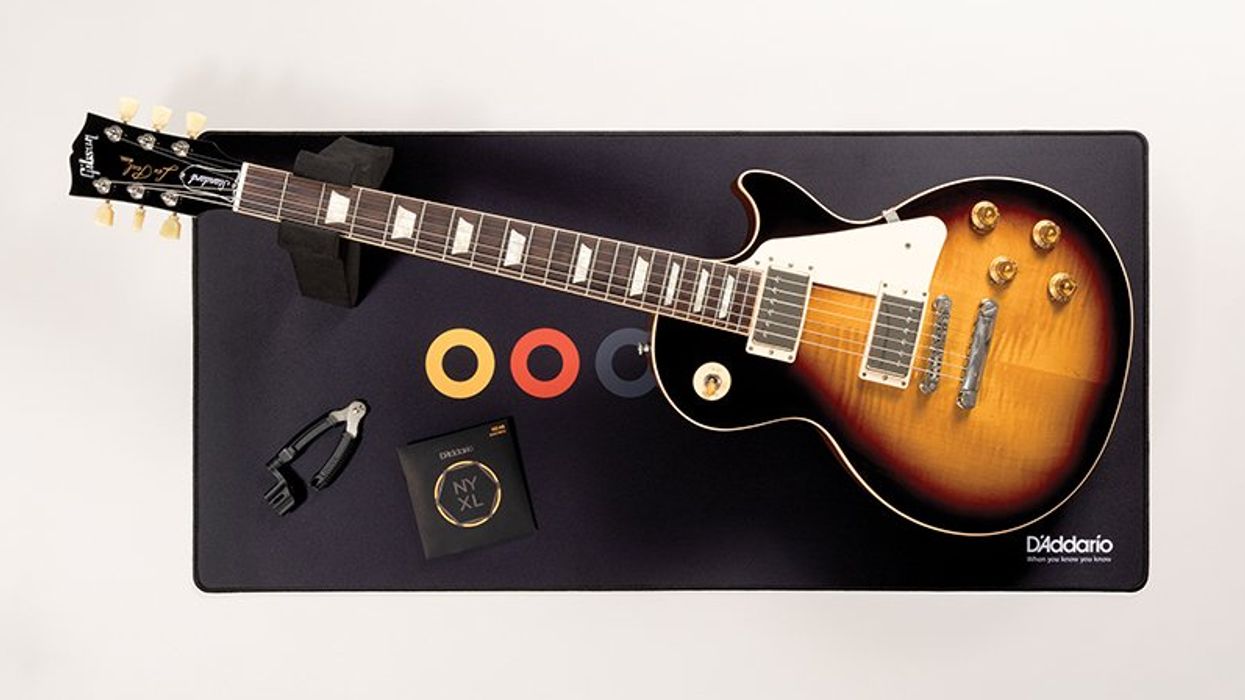


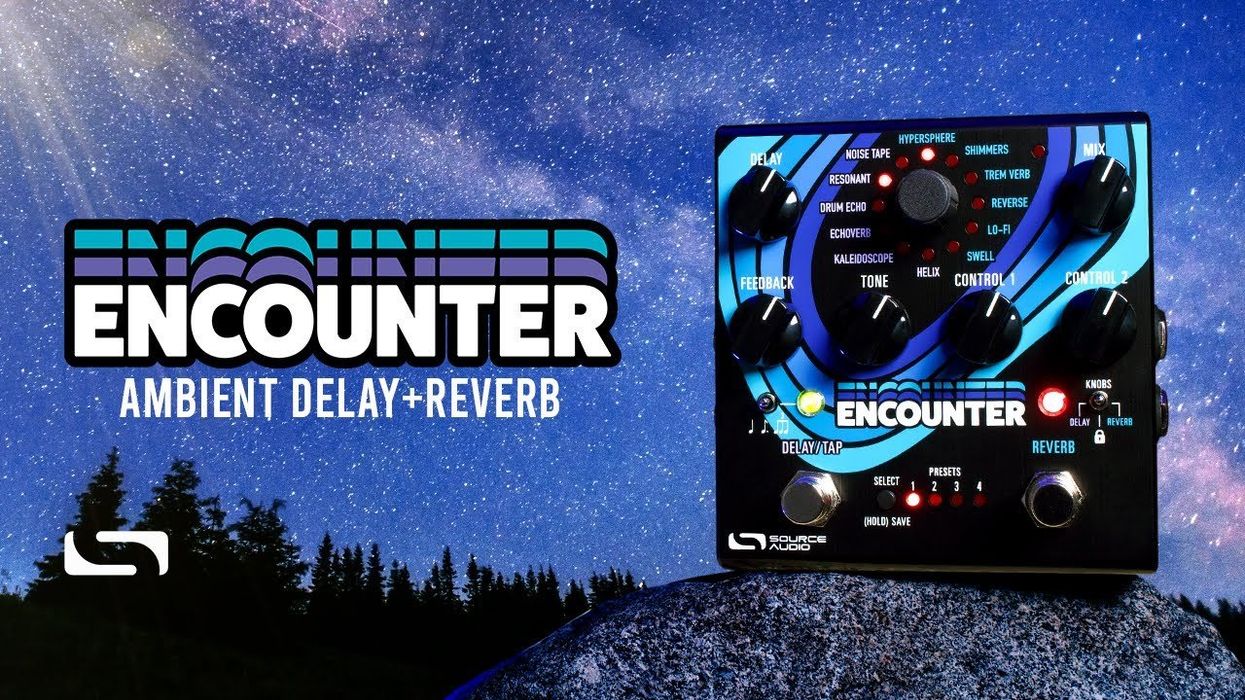

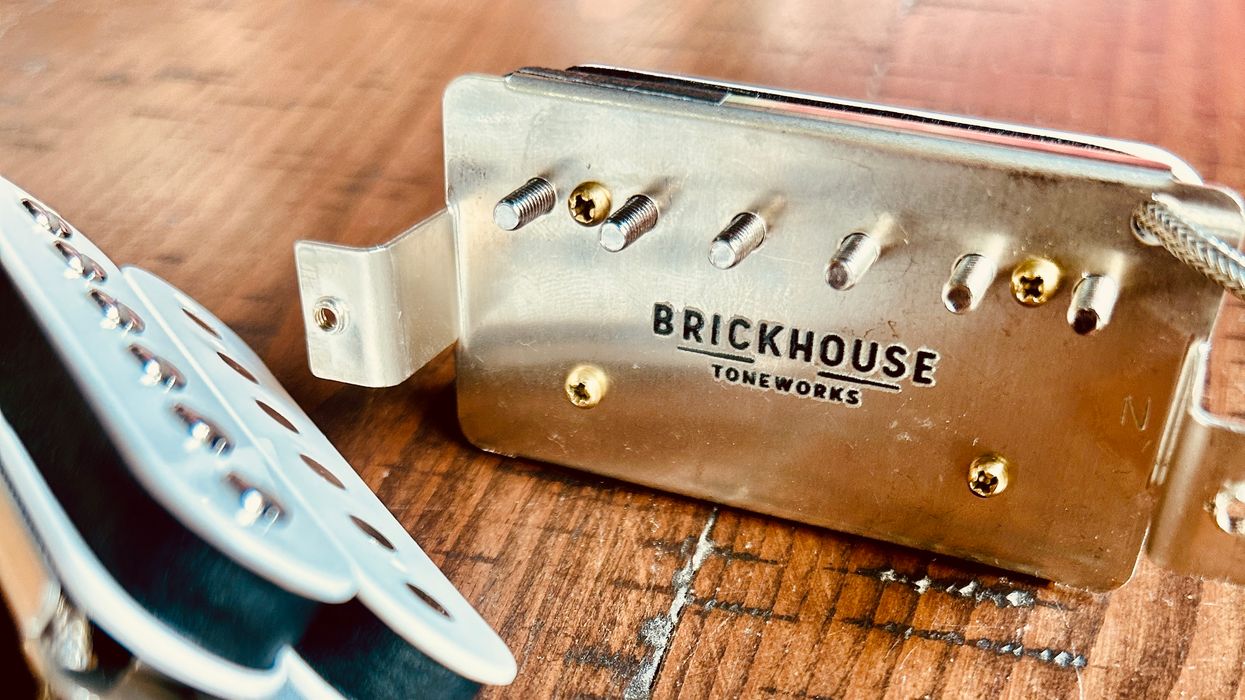

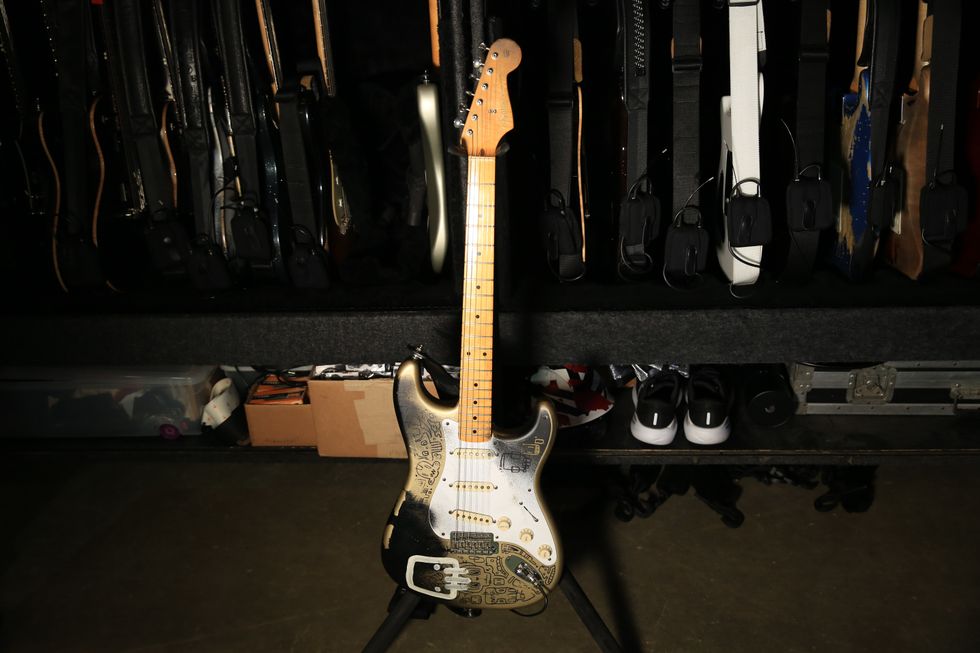
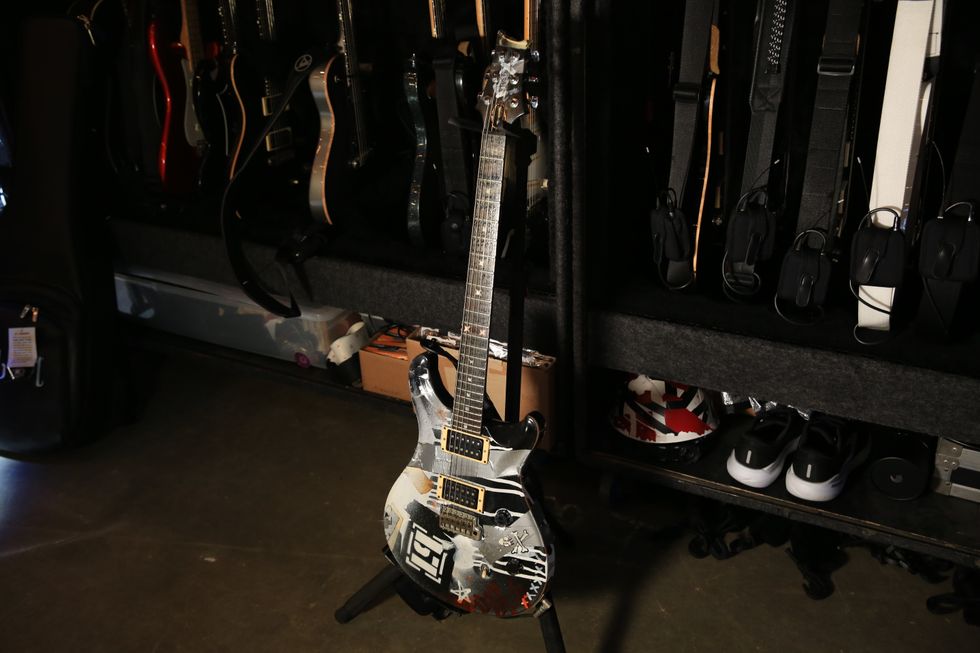
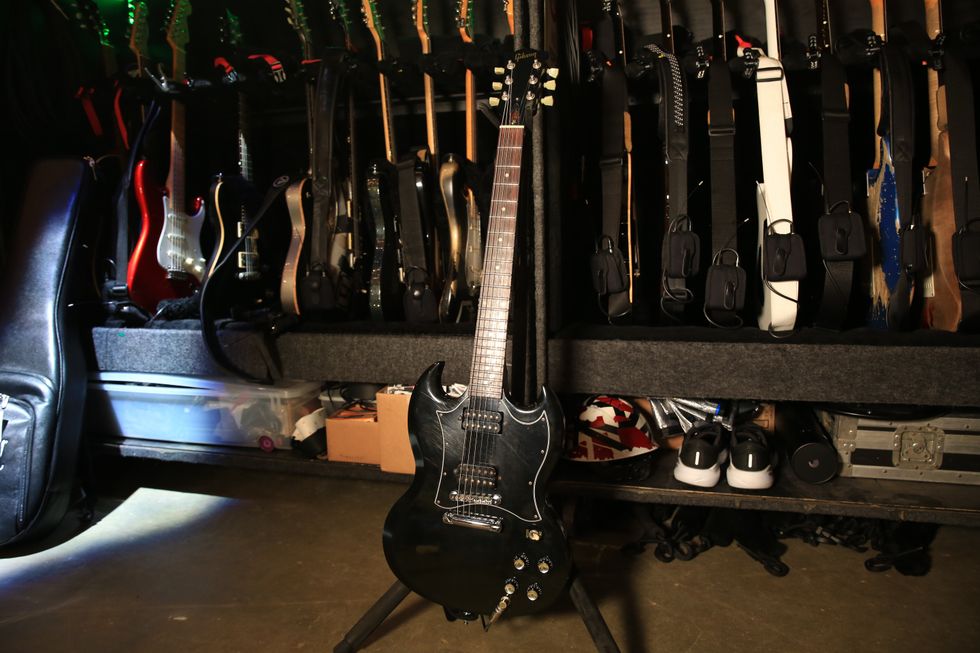

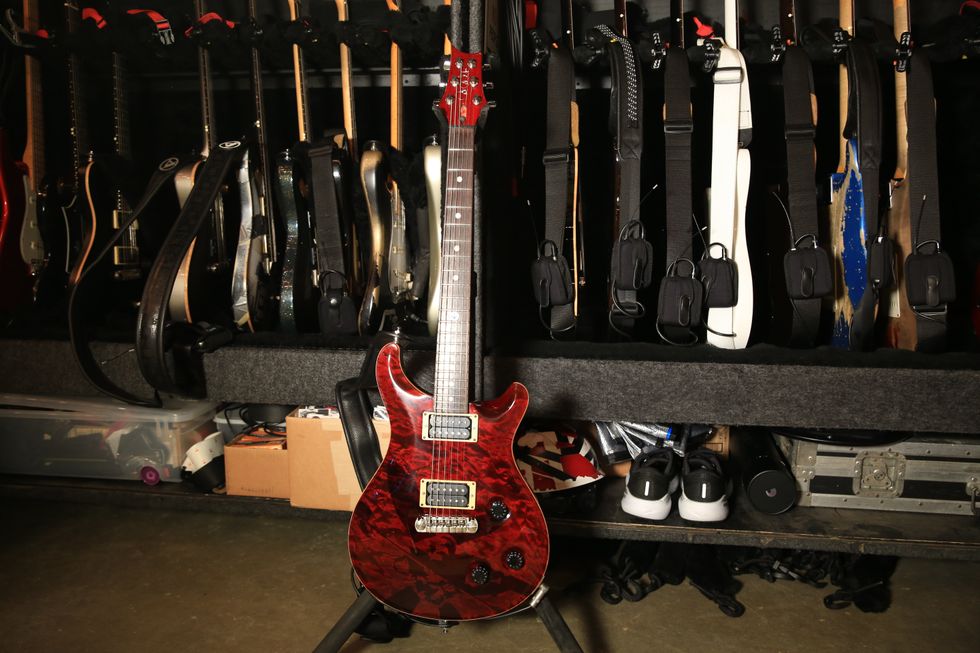
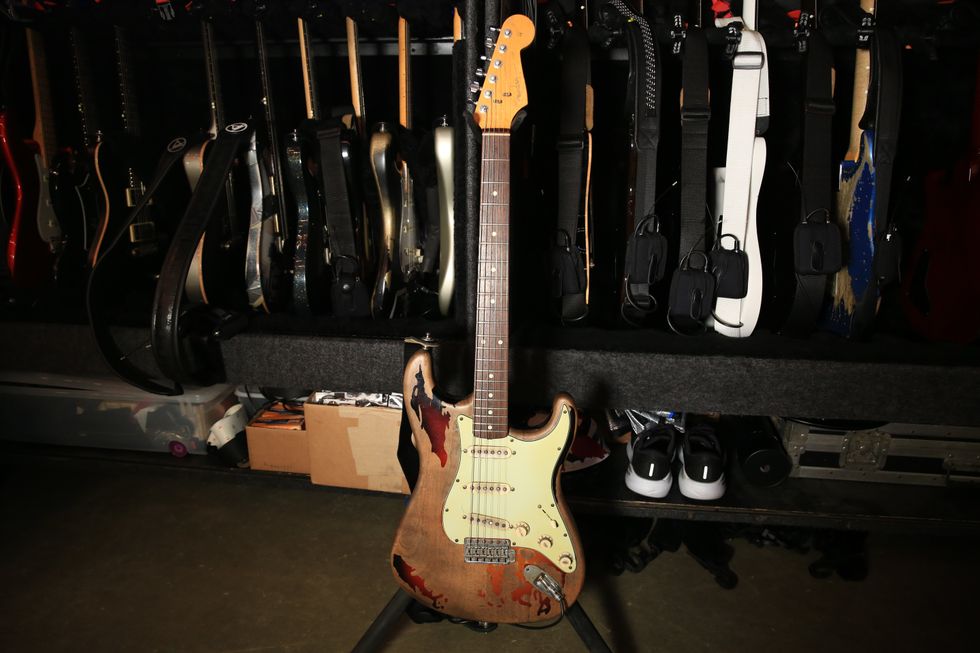



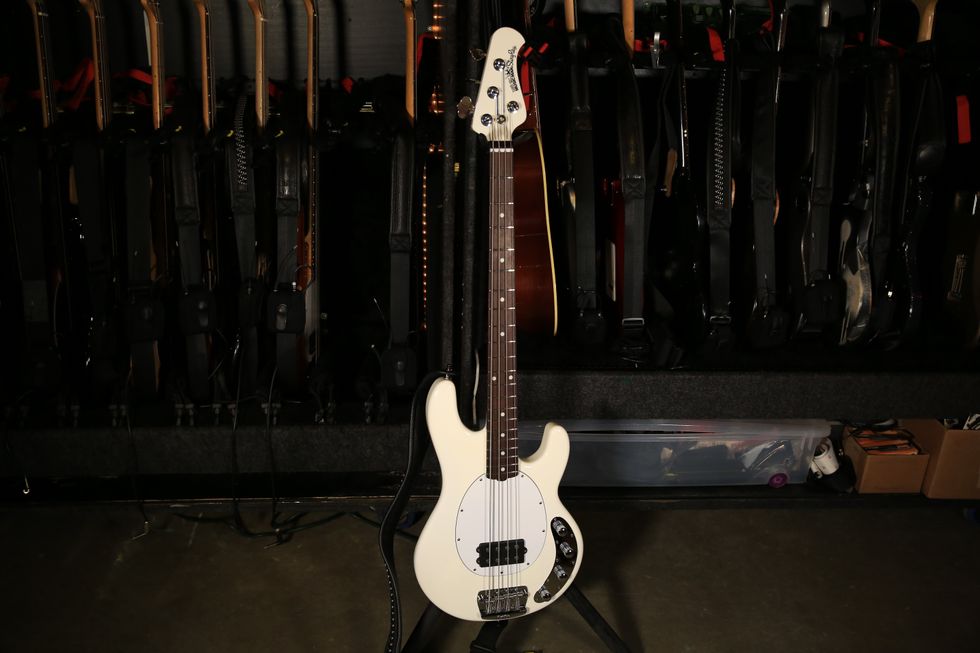
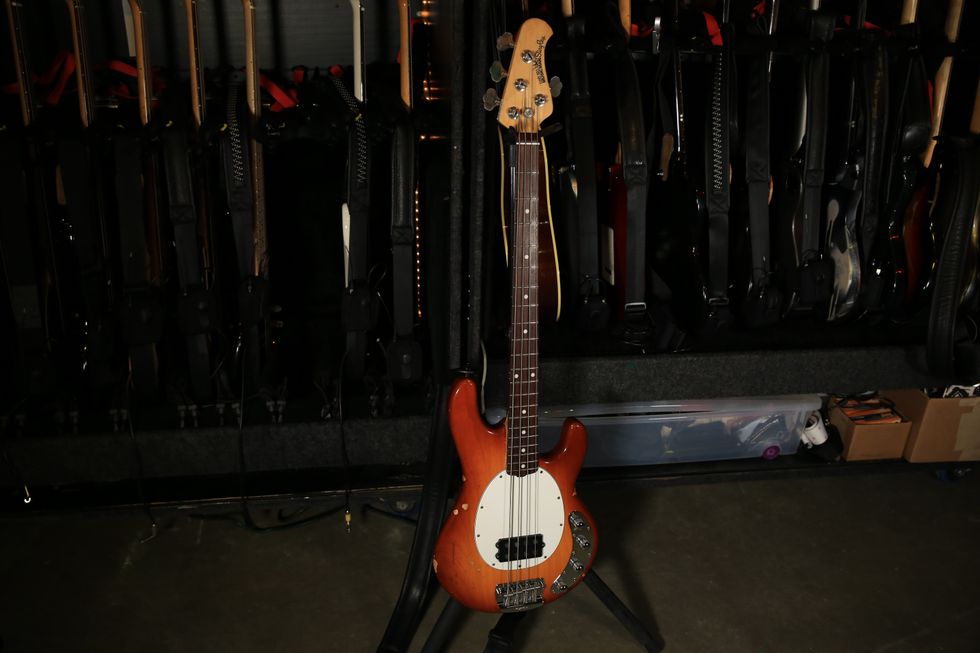
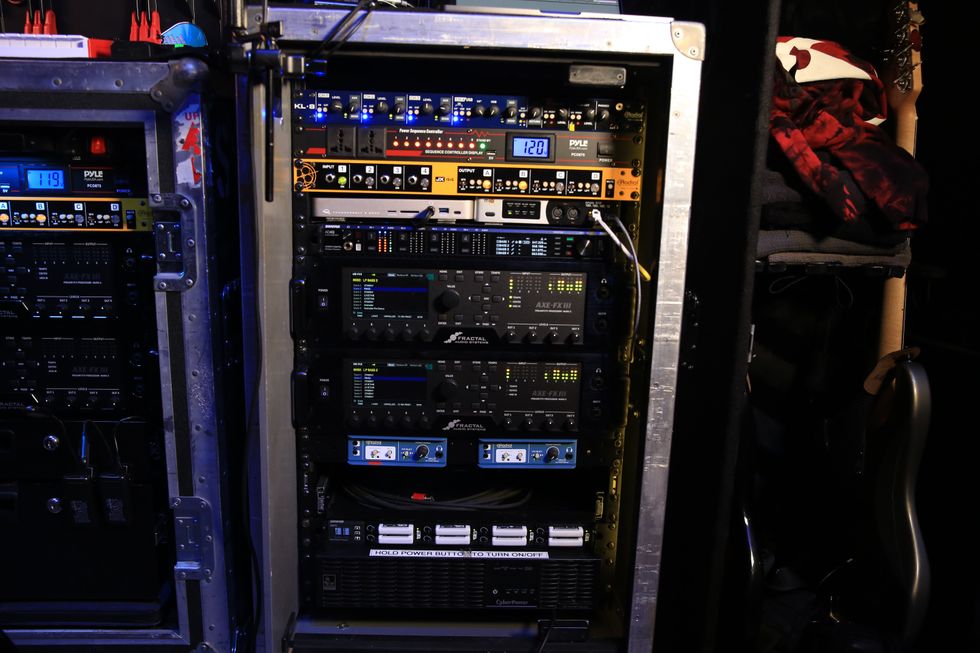



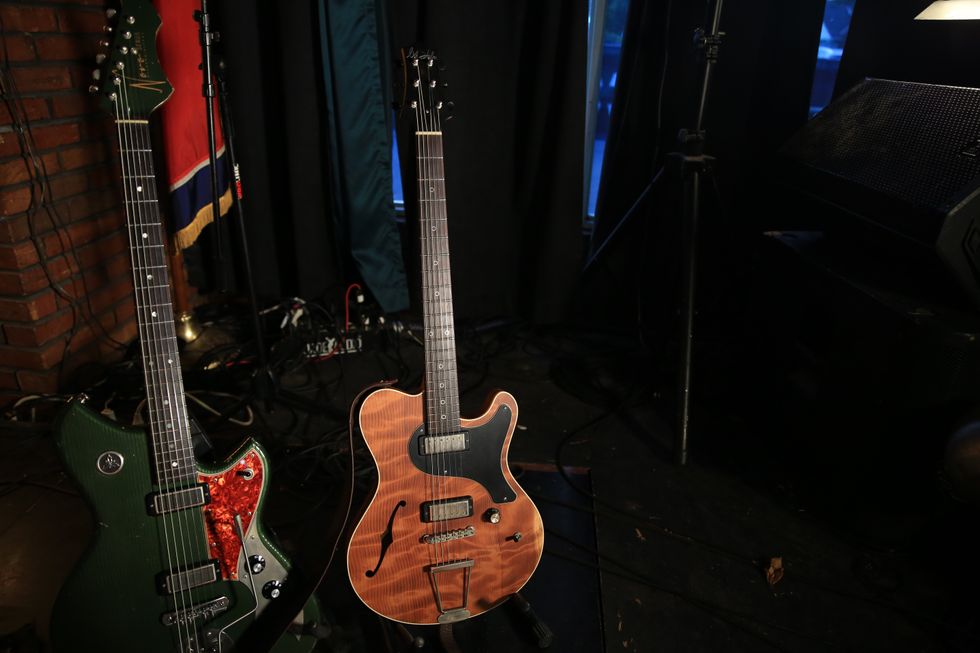
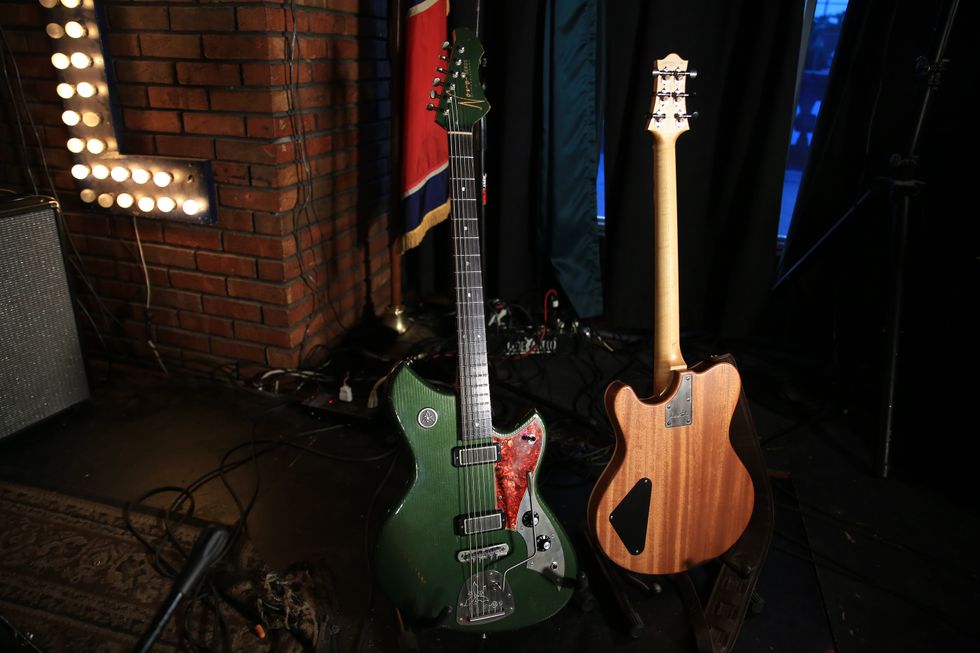
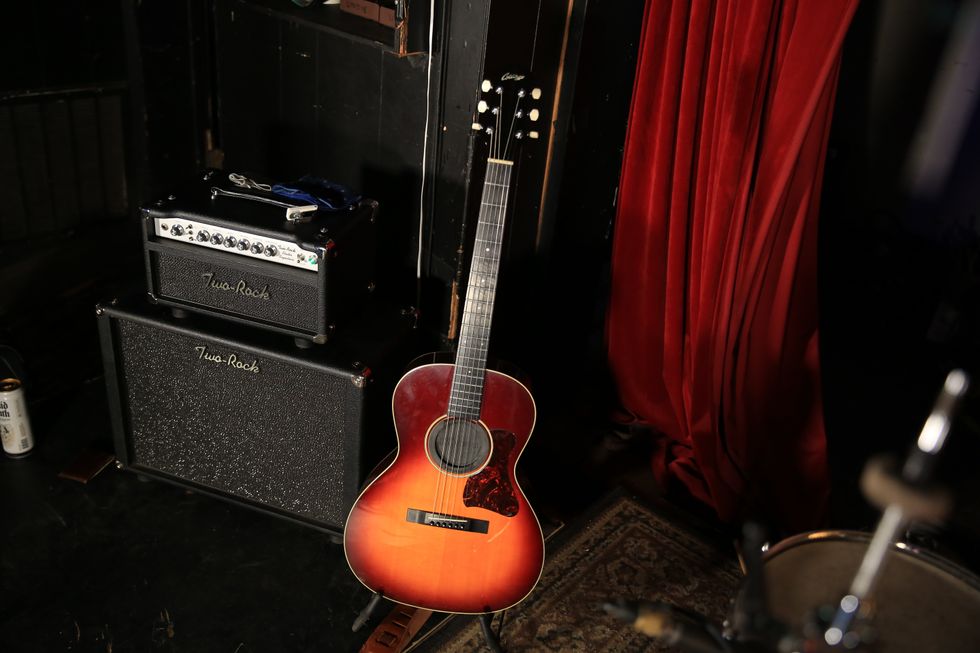
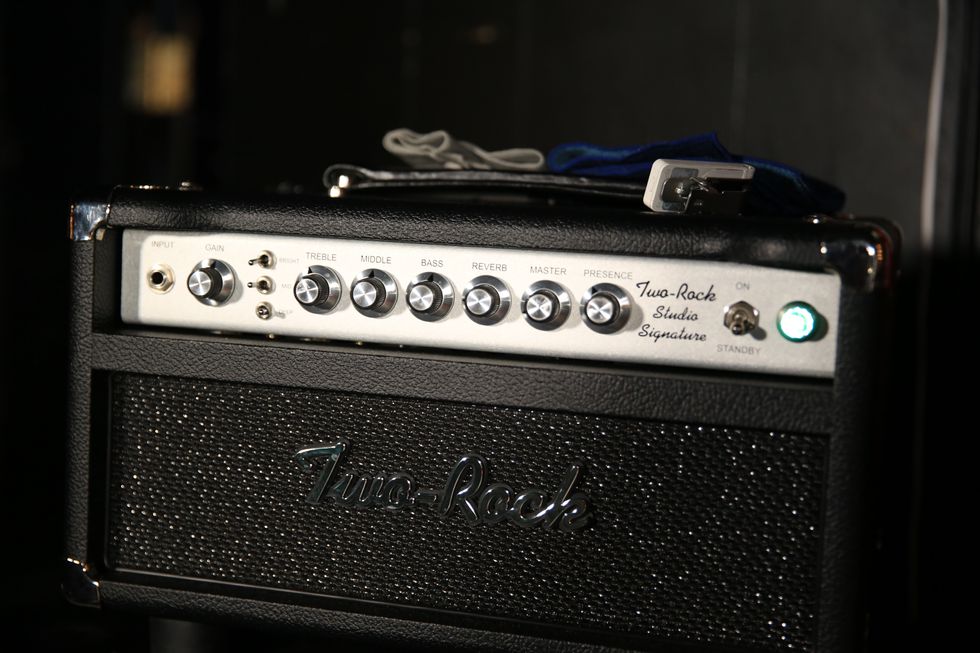
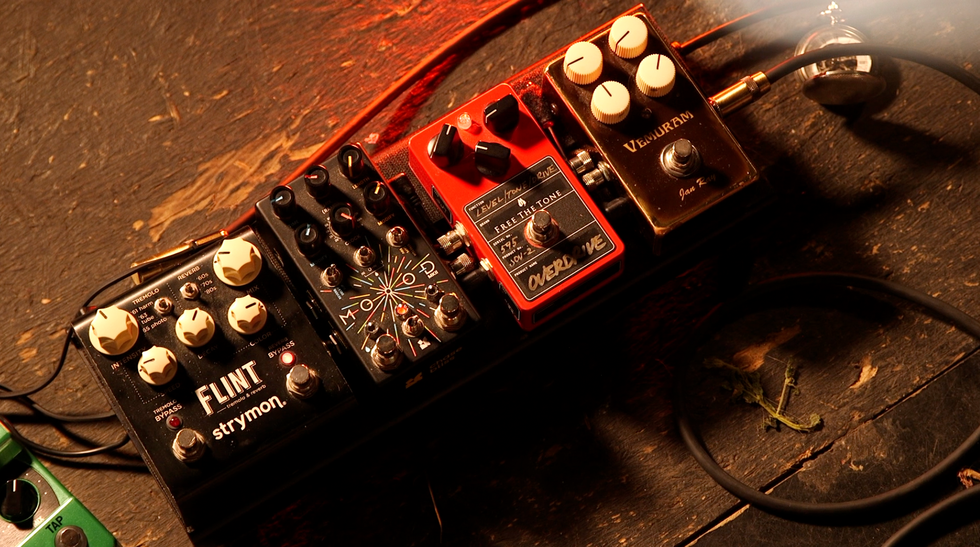
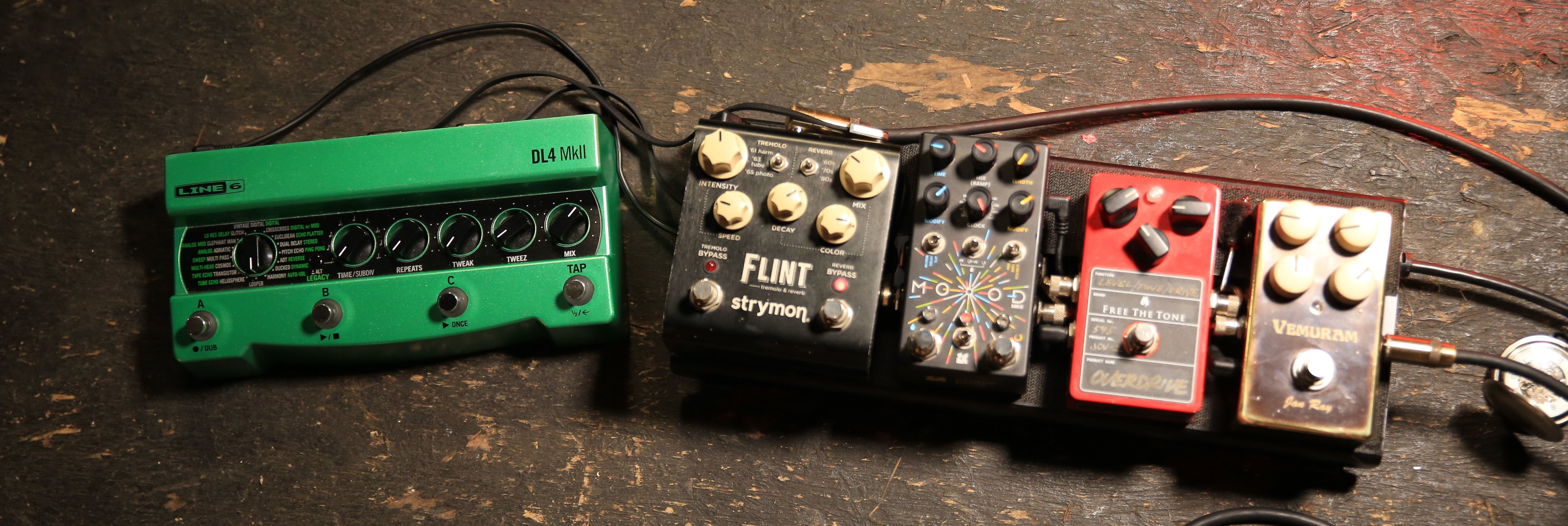 Miller’s Collings runs into a Grace Design ALiX preamp, which helps him fine-tune his EQ and level out pickups with varying output when he switches instruments. For reverb, sometimes he’ll tap the
Miller’s Collings runs into a Grace Design ALiX preamp, which helps him fine-tune his EQ and level out pickups with varying output when he switches instruments. For reverb, sometimes he’ll tap the 

